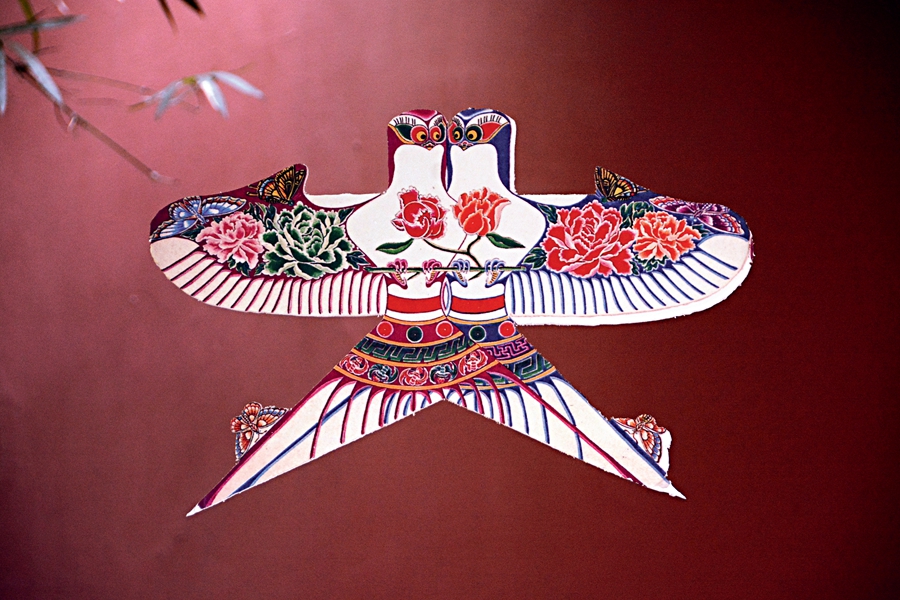The Earliest “Aircraft”
China Today,April 20, 2018 Adjust font size:
Nantong Kites
Nantong is the main production area of kites in South China. The Nantong kites feature their distinctive musical effect when flying in the sky as different whistle combinations have been fastened to the kites.
Nantong kites feature large and flat shapes, with the large ones extending as long as over three meters, and even the small ones reaching about one third of a meter. Their shapes include square, rectangle, hexagon, and octagon, with colors such as red, yellow, and black, forming a contrast with the azure sky and white clouds. The most popular are hexagon-shaped kites. Sometimes the kite maker strings several, from seven to 19 hexagon kites together. Such combination is at least one meter long, with the big one stretching four to five meters.
The defining feature of Nantong kites is about its musical sound effect. Whistles, big or small, with the number ranging from dozens to over one hundred, are fastened onto the kite. The big whistle is made of a gourd, making a sound similar to that of cello. The small whistles are made of shells of chestnut or gingko, making a high-pitched and clear sound. When the kite is flying in the air, those whistles make sounds of different tones, creating a symphony.
The process of making Nantong kites is complicated. First, choose old bamboo stem which is tough enough yet with good resilience to make the frame. Roast the bamboo chips, polish them with abrasive papers, and coat them with varnish to prevent damage by worms. It is better to make a kite on a dry and sunny day. Symmetry is vital to keep the kite balance against strong winds. After the frame is done, kite maker is going to sew the kite with silk fabric and waxed threads. The kite line should be fastened in a symmetrical way, so that it is easy to control the kites when they fly. Nantong kites usually have two tails, which are usually made of straw rope. They help the kite keep balance when flying.
The whistles on Nantong kites are usually divided into two shapes: cylindrical and globular. The cylindrical ones are made of bamboo tube or other materials, and the globular ones are made of gourds or shells of ginkgo, chestnut, or longan. As those materials are light but tough, they are suitable to be fastened onto kites and they can produce a clear and loud sound. As the mouth of each whistle and their making material varies, they produce sounds of different volumes, qualities, and tones.
As the Nantong kites are equipped with a full set of whistles, which are usually weighty, they can fly only when the wind is strong enough. The wind needs to be even stronger to fly some larger ones, which can at the same time produce a pleasant “melody.”
The traditional craftsmanship to make Nantong kites includes various techniques such as engraving, embroidering, and calligraphy writing. The process also involves sciences such as aerodynamics, acoustics, and meteorology. In 2006, Nantong kites were included into the list of the first batch of national intangible cultural heritages.

